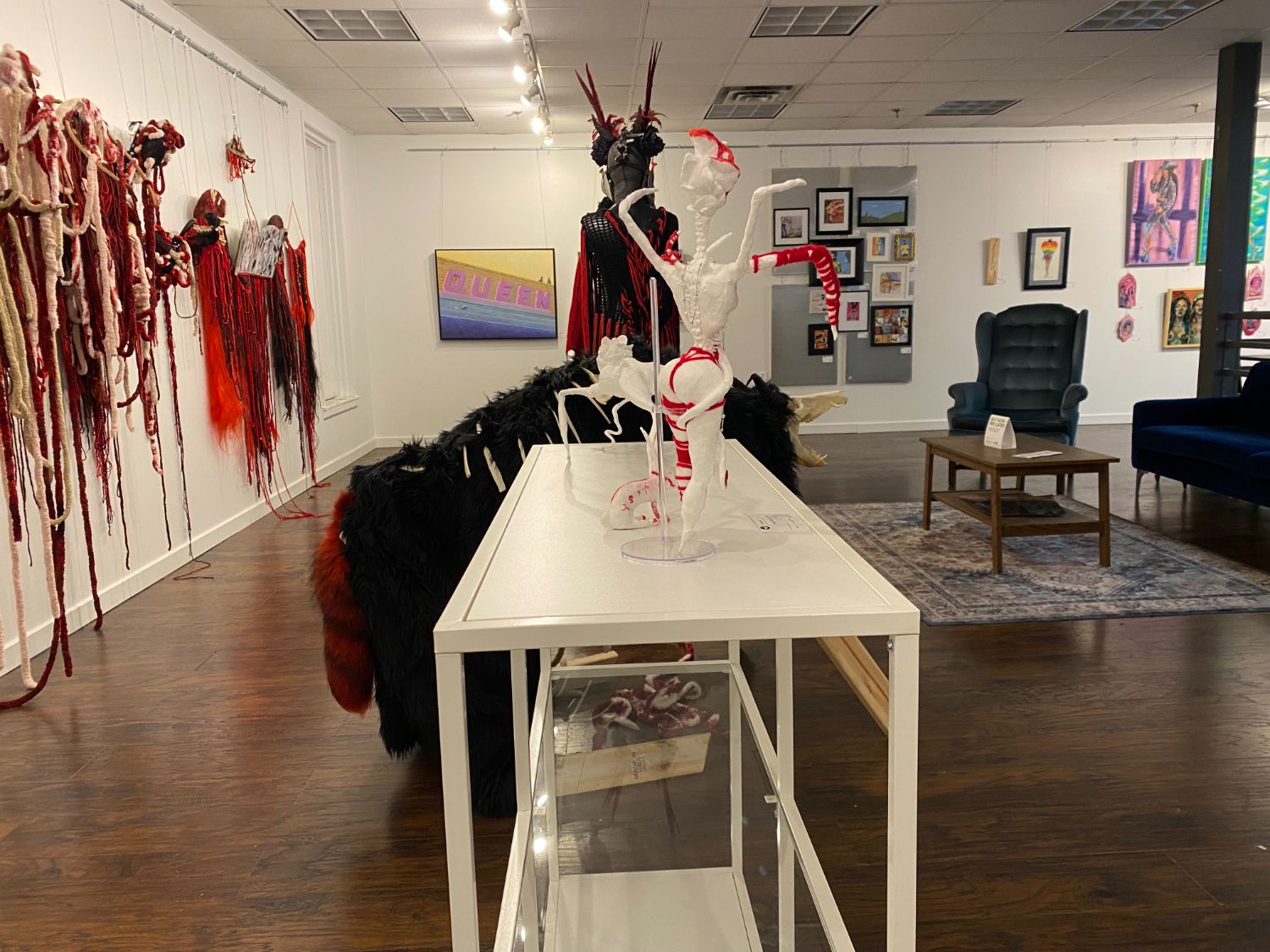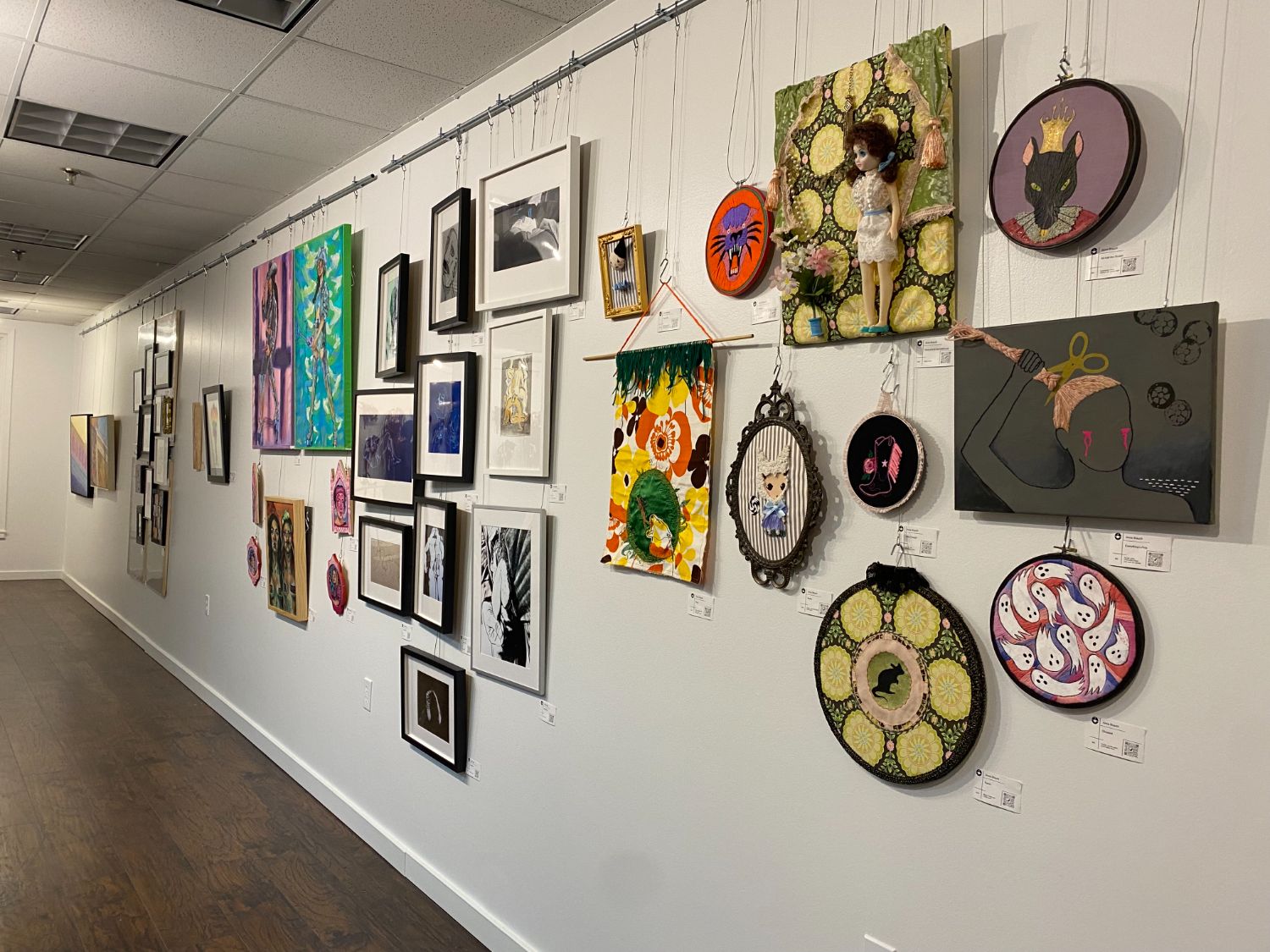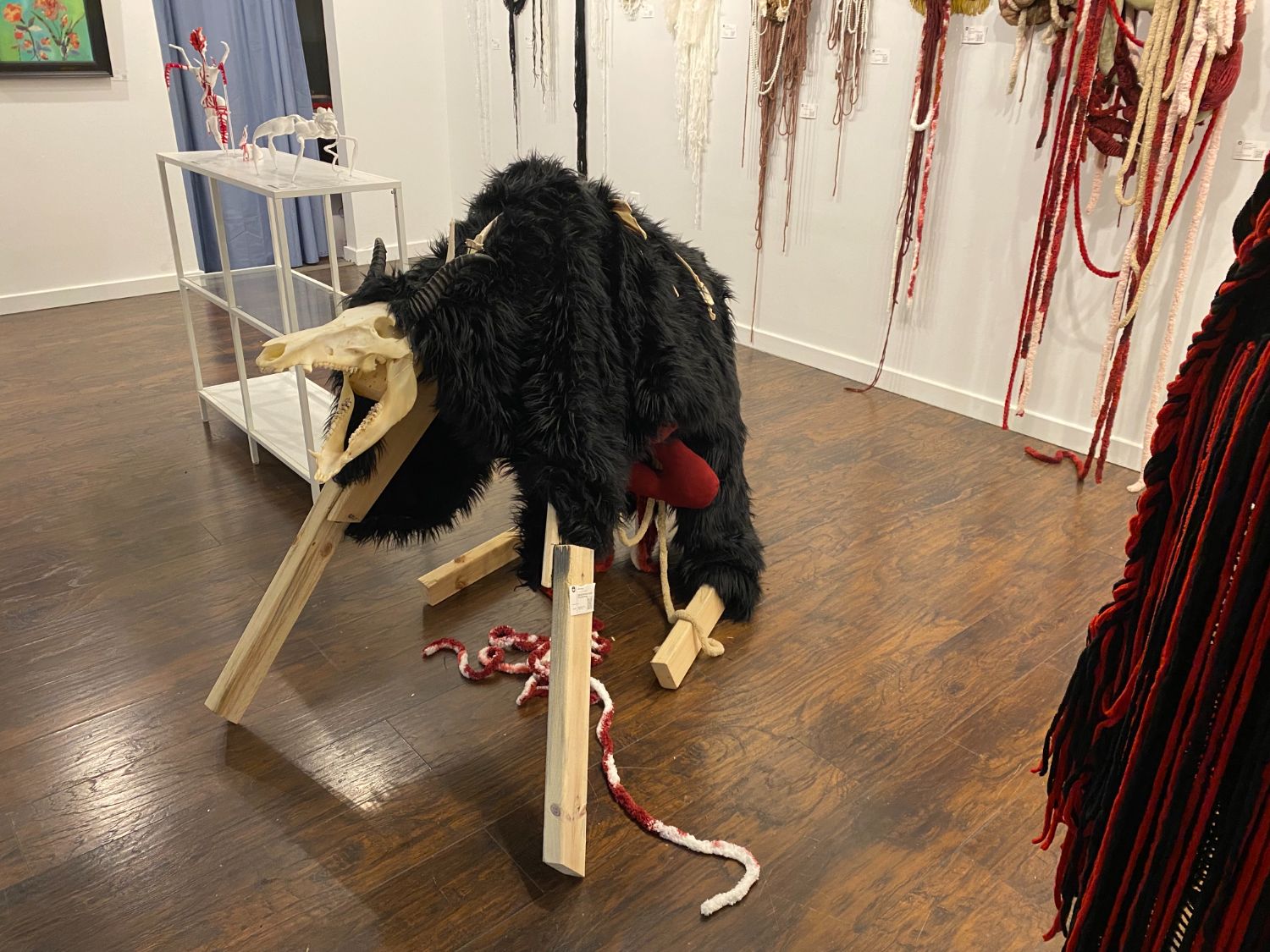
Umbra Arts brings LGBTQ+ focus to Lake Street arts community
Published August 13th, 2025 by Bridget Kranz
The gallery and coffeeshop continues expanding with a focus on expressive, uncensored art
The exterior of Umbra Arts was painted as a part of the Street Art Series, previously known as the Lyn-Lake Art Series.
Umbra Arts is one of many local collectives looking to expand traditional pathways for artists to get their work seen. In large part, these collectives are started by artists, with the goal of giving them space for creative freedom and greater visibility.
When opening Umbra Arts last fall, artists and co-owners Josh Kelly and Mike Welton says they asked themselves: How do we provide value to artists? And how do we provide value to the community?
Their focus was specifically on LGBTQ+ artists, with the goal of creating a space for uncensored self-expression. To bring this value to both artists and visitors, Welton and Kelly set up multiple ways for artists to share and sell their work, and for visitors to engage with Umbra Arts.
Today, the building flows between a coffee shop — complete with tables and chairs for working and chatting — to a retail space with products made by collective artists, to a gallery in a loft-style second floor. Umbra Arts shares space with Twin Cities Leather on the main floor, a custom leather and apparel store that previously had its own retail and coffee shop — Leather and Latté — in Uptown.

The Twin Cities Leather Store, with stairs up to the Umbra Arts Gallery.
Umbra Arts is continuing to grow and expand its offerings, bringing an artistic and community hub to the corner of Lake and Lyndale, and amplifying local emerging and established LGBTQ+ artists working in a variety of media.
Growing out of the LGBTQ+ community
Umbra Arts has continued to grow since opening in November. The collective now includes 20 artists, and the coffee shop is a new addition as of May. Later this year, Kelly says they’re planning to expand with a photo studio and makerspace available for rent, and with additional classes and community events.
“I had no idea how it was going to go, but I knew how I wanted to run the gallery,” says Welton. “I wanted to run it as a cooperative where the artists are participants … I wanted it to be a collective of friendships and people supporting each other. It’s not like a regular gallery where you drop your work off and might not see the gallery for a month.”

Umbra's second-floor gallery has room for collective artists to show their work, as well as space dedicated to rotating exhibitions.
From the start, Welton says, Umbra Arts sought to be a space of uncensored expression, whether political, sexual, both, or other. Although they offer some light curation — helping artists decide which pieces pair nicely next to each other, working with them on lighting — the collective doesn’t decide or censor what artists put on the wall.
“Most of our artists are emerging artists,” says Welton. “They felt emboldened to apply and to show their work for the first time. It’s been rewarding for them and for us to see their work go up — how to plan a show, how to promote it. A lot of it is a form of mentorship.”

Cooperative artist Henry Sabia-Tanis creates upcycled lamps and sculptures from discarded materials.
Juliet Parisi joined the collective in February, after hearing about it from fellow Minneapolis artists. Since then, she’s been impressed with the growth and community outreach that Kelly, Welton, and the cooperative artists have done. Parisi and others recently attended the North Star Roller Derby Pride Bout in St. Louis Park, sharing their art and making direct connections with community members.
Parisi knew that she wanted to join the collective immediately after meeting with Kelly and Welton. Parisi’s studio is in her home, which limits her ability to open it up for events and visitors. In Umbra Arts, she says she found a space where she could show her work while still being herself artistically.
“I feel sometimes that if you don’t have a studio or gallery to show your work, you’re not relevant,” she adds. “This is a space where I can be myself and show my art without censoring myself. A lot of places say, no nudity, no politics, no graphic violence. They don’t say that. You’re allowed to put up your art and put it out there.”
In addition to the wide range of topics covered in the art, the artists also vary widely in the type of media they use, leading to a more diverse collection of work available for view or purchase.
Revisiting ways of purchasing art
The large retail space at Umbra offers the opportunity for people to walk away with a piece of art at a more accessible size and price point, says Kelly. “When artists apply to join the collective, we talk to them about wanting them to have merchandise. That’s artwork that’s accessible for people who want to walk away with something that’s $5-20.”

Umbra Arts is home to 20 collective artists, working in a variety of media.
They’ve also given visitors a more independent way of purchasing art from the gallery. Each piece is accompanied by a QR code with pricing information and a link to Shopify, which provides a financing program for people who would like to pay in installments. By offering this, Kelly says they’re hoping to take some of the awkwardness out of the art-buying process.
“People don’t have to come to us and say, ‘I really like this, but I can’t afford it,’” says Kelly. “If they qualify for financing, we get paid upfront by the firm," adding that they don't know whether a client uses financing.
Addressing financial sustainability — for artists and the collective
In the hopes of making collective membership financially viable for artists, Umbra charges a lower-than-average gallery commission. They charge 35 percent on gallery art and 20 percent on merchandise for people who rent wall space. Kelly says their goal is that artists will make enough from merchandise sales to cover the cost of gallery wall space, which ranges from $100-$200 per month, depending on size.

The Unraveling, by artist Jackalope of All Trades, is on view at Umbra Arts through August.
Kelly and Welton are also thinking about how to make the collective financially sustainable in its own right. They’re in the process of buying their current building. Kelly points to Umbra's varied revenue streams as a way of being sustainable in a time of uncertainty when it comes to federal and state grants.
Since May, Umbra Arts has been home to a coffee shop, and they have plans to continue expanding into more community gatherings — whether through expanded course offerings this fall, or through a planned photo studio and makerspace that will be available to rent. The hope is that by having a diverse array of offerings, Umbra can keep costs down for artists and visitors while still ensuring the collective is sustainable.
Another major aspect of Kelly and Welton’s work so far is getting Umbra Arts out into the community through events, such as Twin Cities Pride and the Powderhorn Art Fair (Visit them at the Powderhorn Art Fair August 2-3, from 10 a.m.- 5 p.m. in Powderhorn Park.). It’s a chance for artists to sell their work and spread awareness about the new gallery and community space on Lake Street.
There are also ongoing events, including Walton's nude figure drawing class on the second Sunday of each month, weekly ambient yoga on Thursdays, and hosting the local chapter of the Queer Silent Book Club.
“For a space like this, only being open since November, I feel like Josh and Mike have done so much to make this space profitable, known, functioning, already working so smoothly in not even a year,” says Parisi. “I want to give them so much credit.” ◼︎
To learn more about Umbra Arts' gallery hours, offerings, and exhibitions, check out Umbra Arts.
We can't do it without you.
Help keep independent arts journalism alive in the Twin Cities.